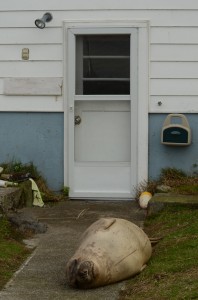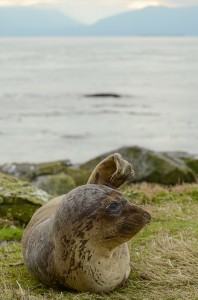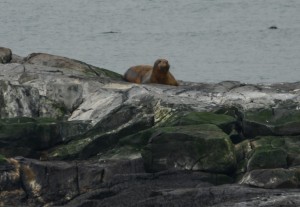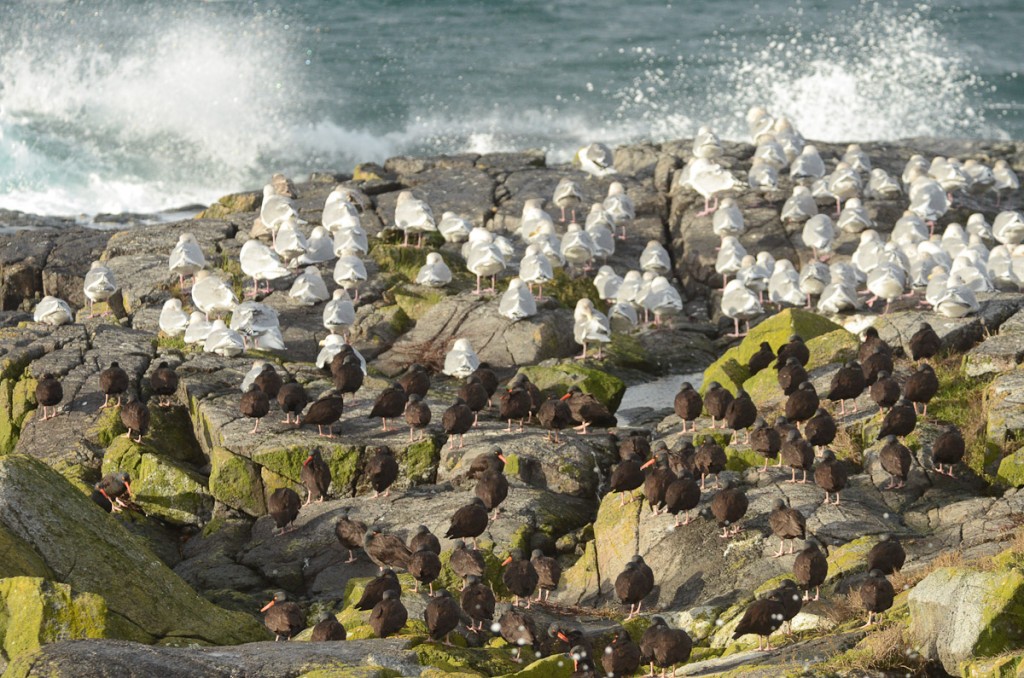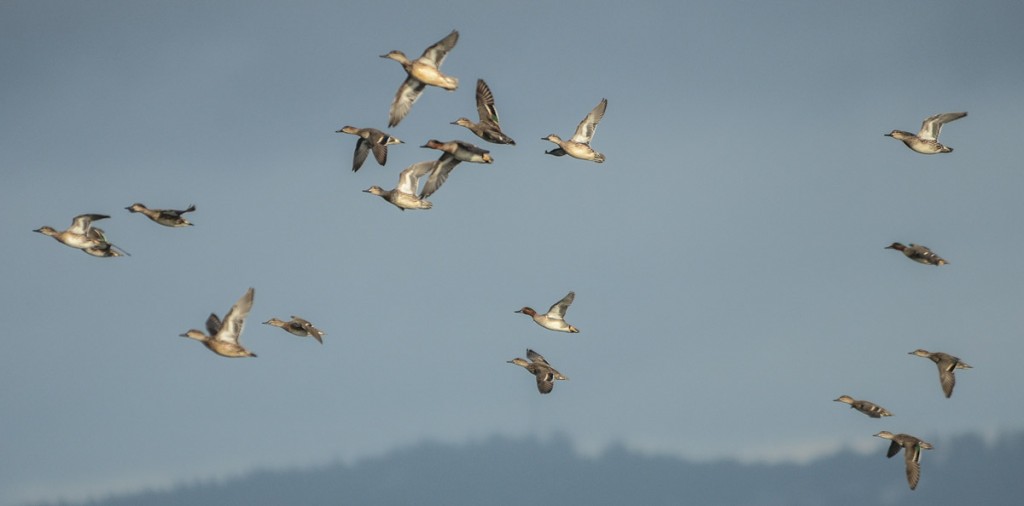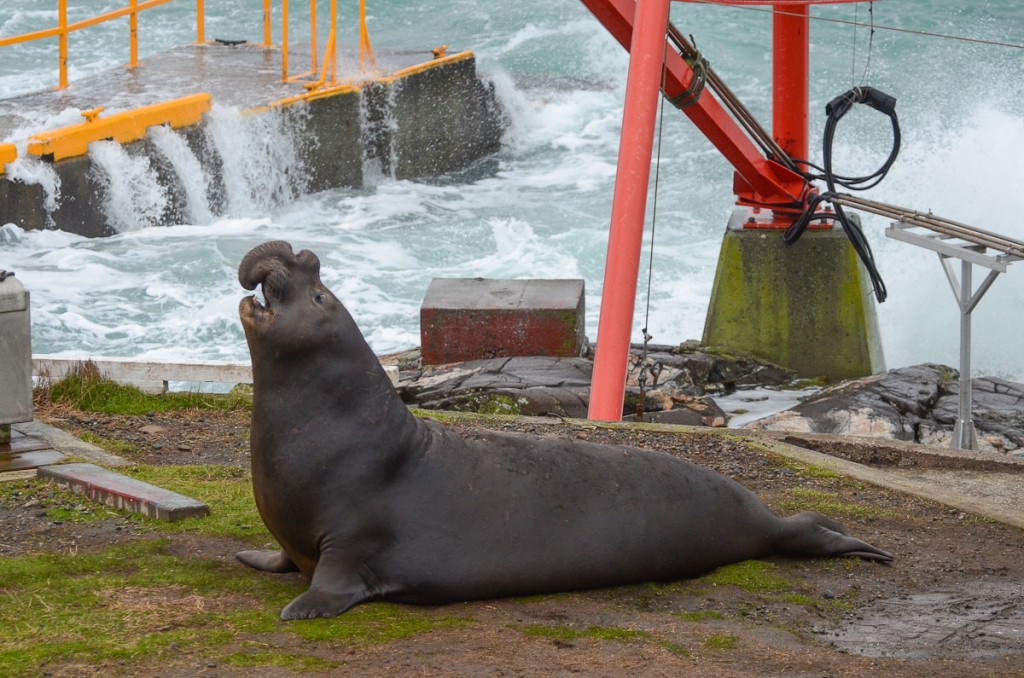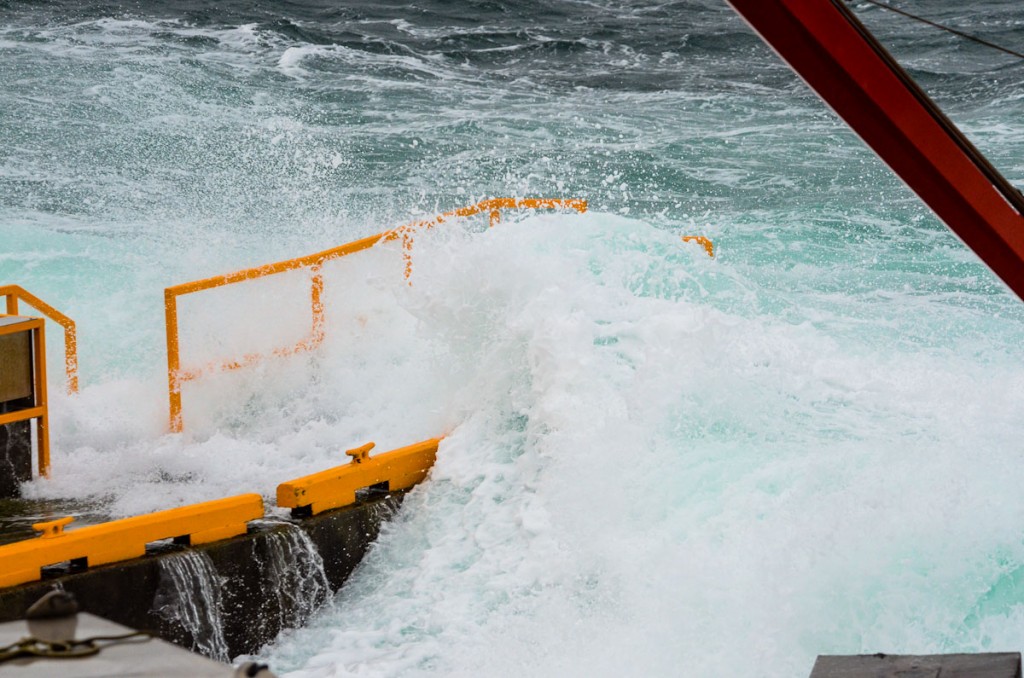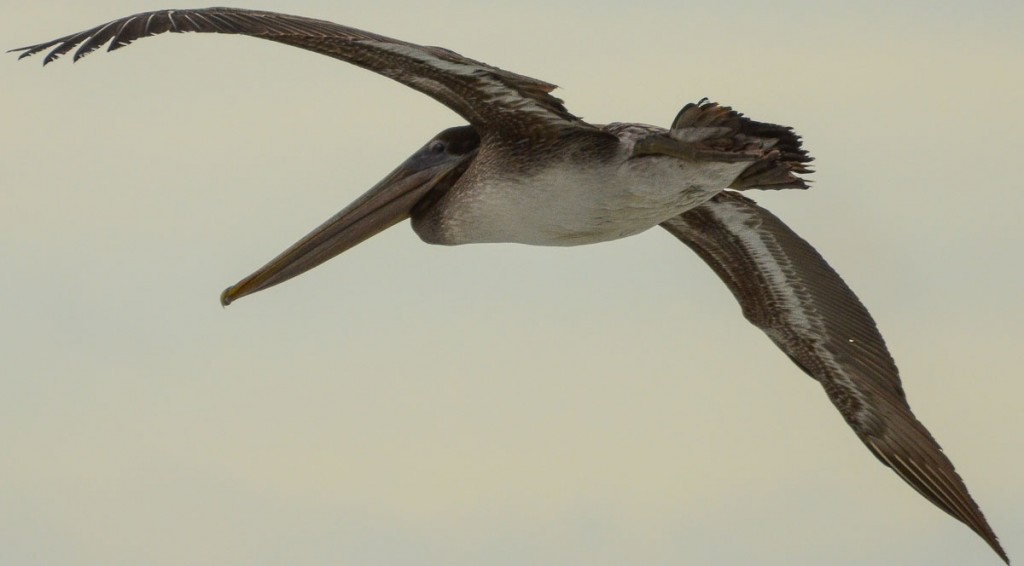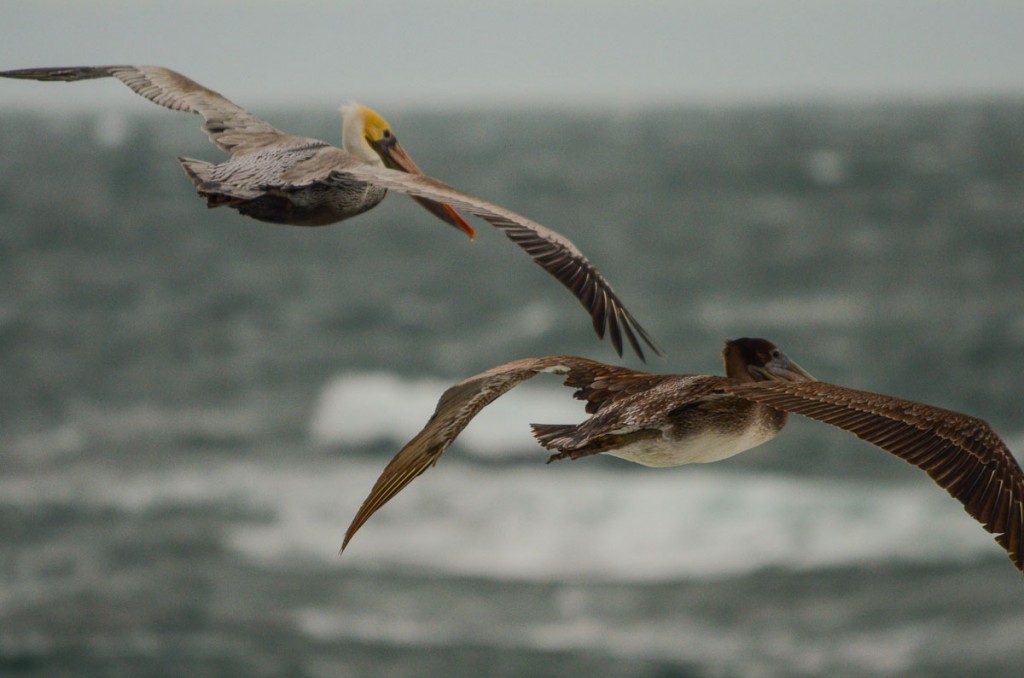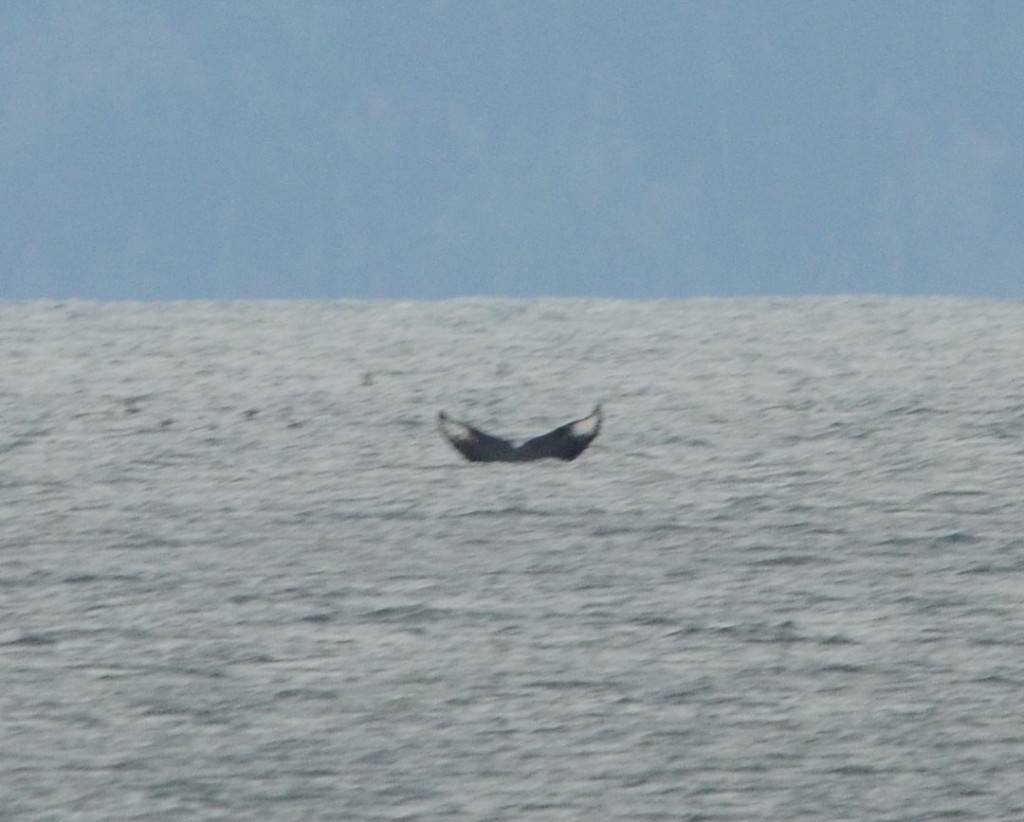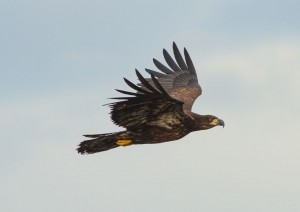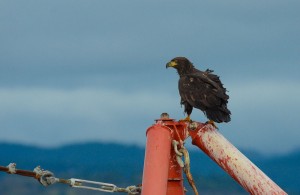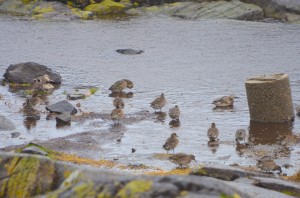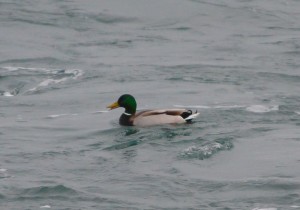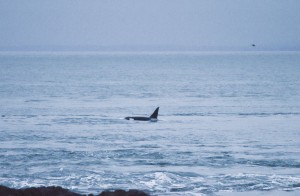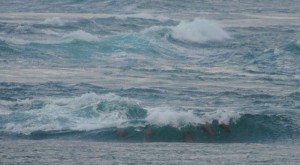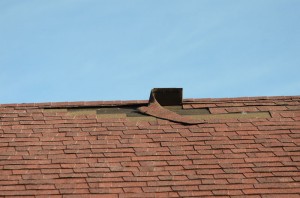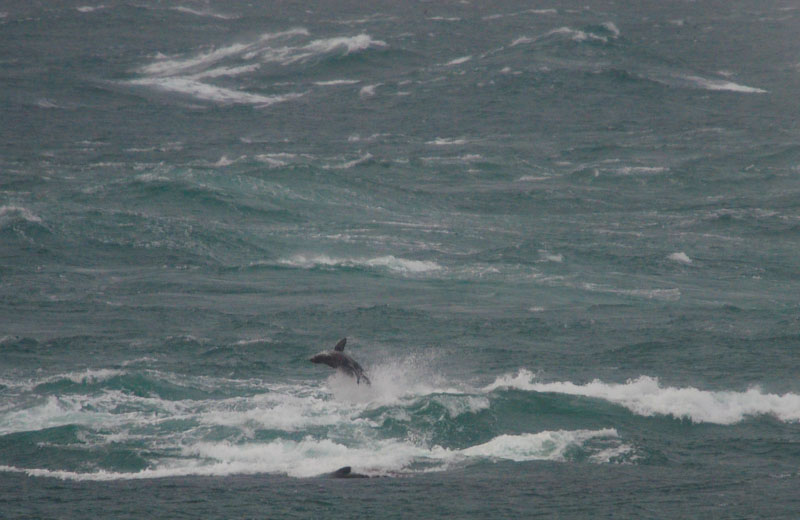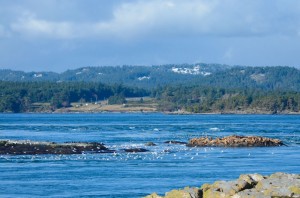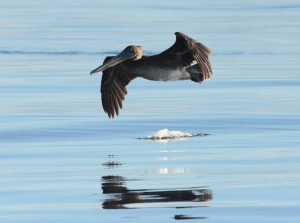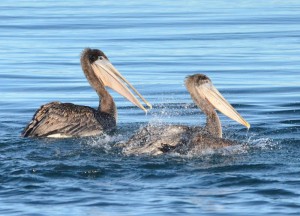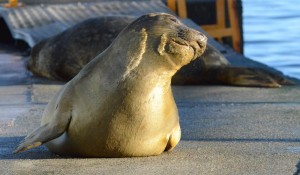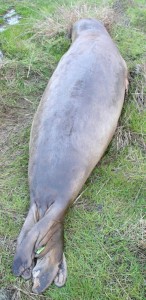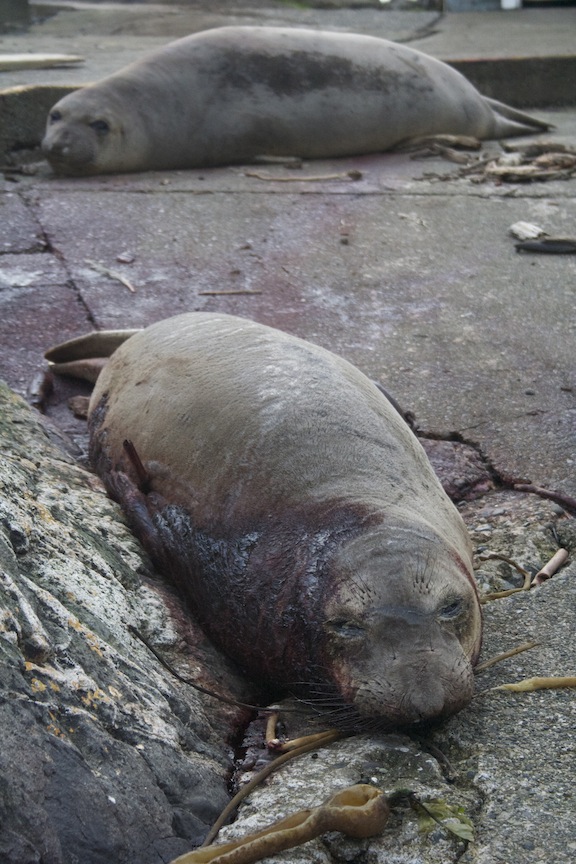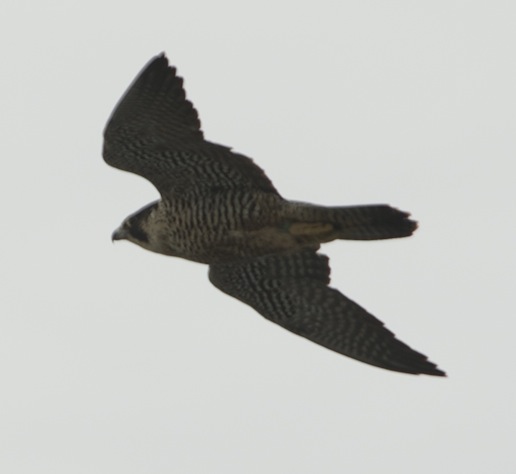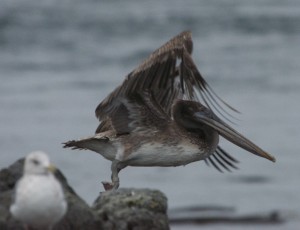The elephant seal population has been steadily declining over the past few weeks. For the last few days since Jan 19 there have not been any female elephant seals visible in the reserve. This is the time when elephant seal pups have been born out here in the past so it is somewhat surprising and a bit disappointing. Both male elephant seals have been back and forth between the main island and West rock and have been chasing and trying to mount the few small females that have been around, which is likely why they have all left.
Author Archives: Alex Fletcher
Census Jan 8
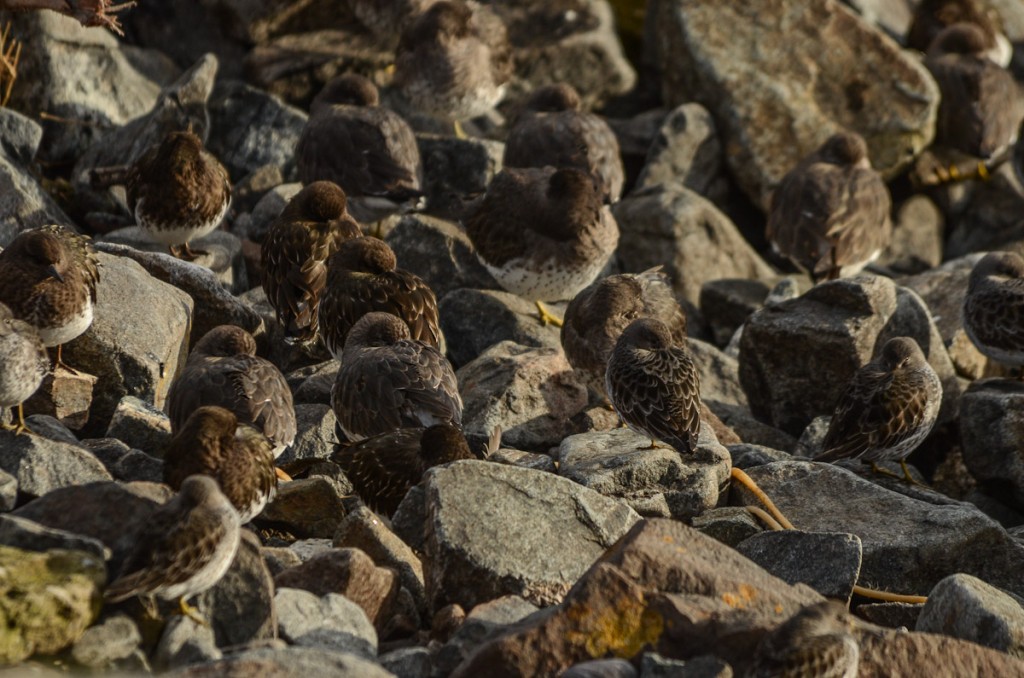
The SGBs (Small Grey Birds). Not only do they all look very similar but they hide their beaks! There was a mix of Black Turnstone, Surfbirds and Rock Sandpipers in the NE bay.
On January 7 an 8th there was a W wind 30-35 knots. The Green Winged Teals returned to the island with slightly higher numbers than last time, they spent their time in the pools on the NE side and picking through the mud with their beaks. I have not seen any Pelicans in about a week and there have not been any Canada Geese here for about two weeks. Karen Benzel from International Bird Rescue contacted us recently to report that Pelican R36 that was seen here in November has been taken in for rehabilitation at Wild Arc in Metchosin.
Census January 8, 2013:
75 Cormorants
7 Harlequin ducks
4 Bald Eagles
1 Mallard
81 Black Oyster Catchers
120 Gulls
17 Green Winged Teals
20 Black Turnstone
10 Surfbirds
10 Rock Sandpipers
1 Kildeer
1 River Otter
20 Harbour Seals
100 Northern sea lions
10 Elephant Seals: 8 female, 2 male
Weather past week
On Dec 25th Easterly winds were gusting over 40 knots pushing swells into and over the jetty. Zeke is seen below just above the jetty near the crane pad. The Pelicans pictured below were hovering in winds around 30 knots.
Since Dec 25th atmospheric pressure has climbed steadily reaching a high point of 1030 hPa yesterday, Jan 1. For the past several days we have had sustained NE winds between 10 and 20 knots which demonstrates the potential for harnessing wind energy at Race Rocks, particularly in the winter months when there is less solar radiation to charge the batteries. Pearson College is in the process of sourcing a wind generator for the island with the goal of further reducing and eventually eliminating dependance on fossil fuel electric generation in the Ecological Reserve.
Seawater Temperature and Salinity Data December, 2012
We will be including our monthly submissions on daily seawater temperature and salinity as it is provided to IOS from the daily sampling by the Ecoguardians at Race Rocks.
See the PDF file:seawaterdatadec2012![]()
For the daily data for past months presented on this log, see:
https://www.racerocks.ca/category/seawater-data-2/
Past records of seawater Temperature and Salinity may be viewed at: http://www.racerocks.com/racerock/abiotic/temperature/seatemperature.htm
For monthly means for temperature and Salinity since 1921: http://www.pac.dfo-mpo.gc.ca/science/oceans/data-donnees/lighthouses-phares/data/racerockday.txt
Humpback
Dec 24th
Have had some really nice weather out here since the storm. Pelicans are still stopping in and flying through the reserve, mostly in pairs or singles. Bald Eagles have been quite active in the mornings hunting.
On top of the crane, the eagle had just finished eating what looked like some part of a seagull. In this picture the eagle’s nictitating membrane is covering the eye. According to Baldeagleinfo.com, “every three or four seconds, the nictitating membrane slides across the eye from front to back, wiping dirt and dust from the cornea. Because the membrane is translucent, the eagle can see even while it is over the eye.”
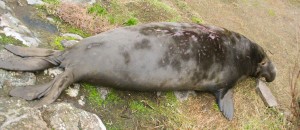 A few nights ago Zeke got some fresh wounds on his back from Misery, it was not as bad as the the last time. Him and Misery have been on the main island for several days now. I have not been seeing as many female elephant seals since the storm.
A few nights ago Zeke got some fresh wounds on his back from Misery, it was not as bad as the the last time. Him and Misery have been on the main island for several days now. I have not been seeing as many female elephant seals since the storm.
On Dec 19 there were 15 Green Winged Teals in a pool on the NE side of the island. This is the first recorded sighting of this bird in the reserve.
There has also been a Mallard duck in the reserve for over a week. Pam Birley first sighted it around Dec 18th, it was also the first recorded sighting of this bird in the reserve.
Yesterday after sunset a lone adult orca passed through the reserve going over Rosedale Reef.
Storm
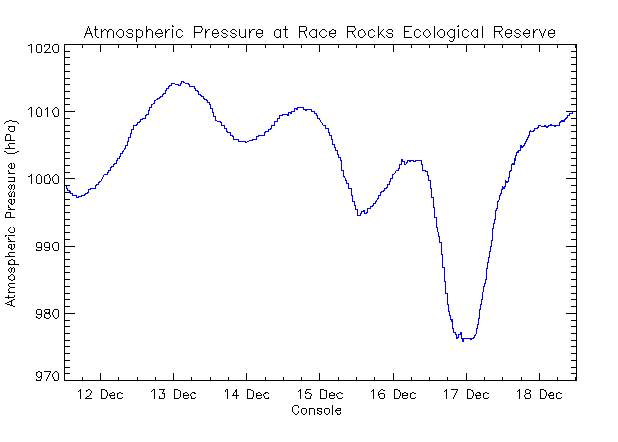
Barometer for past week, taken from: http://www.racerocks.com/racerock/abiotic/barometric/barometric.htm
On Dec 16th in the afternoon a low pressure system moved in right over southern vancouver island bringing Easterly winds that exceeded 50 knots (measured from tower) and then switched 180 degrees, within a few hours over midnight, to Westerly winds toping out also over 50 knots the morning of Dec 17th. As shown above atmospheric pressure reached a low of below 980 hPa, one of the lowest readings i have seen out here.
The westerly winds brought several dumps of hail and rain and created good surf conditions for Northern sealions to catch a few waves. Several shingles were blown off the Science Centre building on both the South and North sides of the roof.
Pelicans
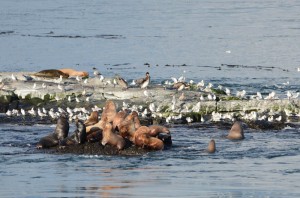
A couple of California sea lions (dark) and Northern sea lions with 3 pelicans and an elephant seal in the background on west rock Dec 13
Pelicans have been in the reserve again Dec 13 and 14th. There were up to 5 individuals, I was not able to see tags on any of them.
It is impressive to watch these birds, especially in flight. They apparently have a wingspan of 6 to 8.5 feet. They glide within what looks like a couple of feet of the water so when they flap their wings the tips will often touch the surface. 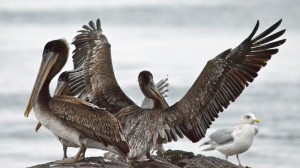
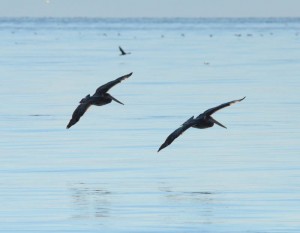
Elephant Seals
There have been two tagged elephant seals on the main island over the past days, green tags 6397 and 6375. Misery has been on the main island, younger male on west rock. There continue to be a total of around 15 elephant seals in the reserve.
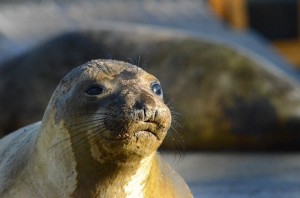 The yearling in the two photos on the left looks like she could be the one that was born here in January (named Squall) but it is hard to tell for sure.
The yearling in the two photos on the left looks like she could be the one that was born here in January (named Squall) but it is hard to tell for sure.
15 Elephant Seals
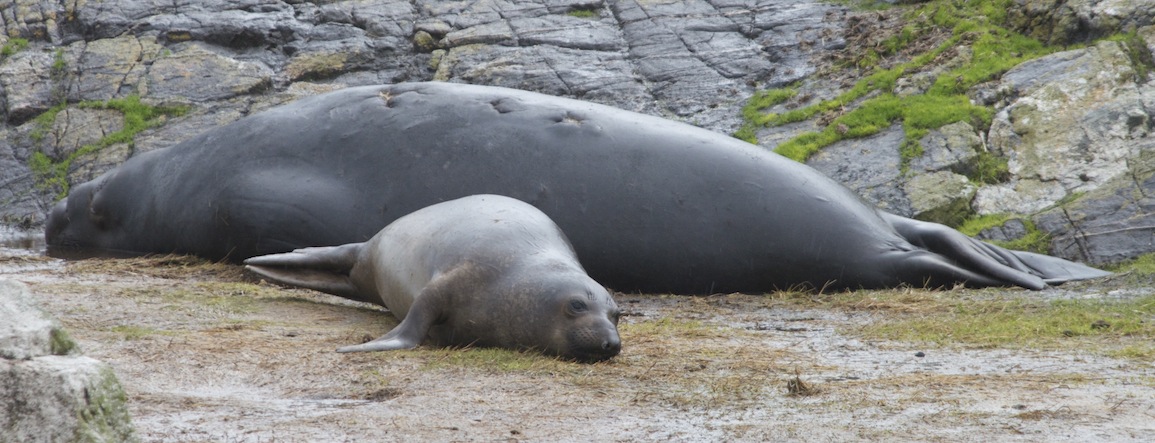
Male elephant seal younger than Misery with deep scars and a female elephant seal on main island Dec 8
On Dec 8 I counted 15 elephant seals in the reserve: 3 female and 2 male elephant seals hauled out on Great Race as well as 10 female elephant seals on West Rock. I think this is the most i have ever counter here.
Unfortunately one of the females on Great Race is injured in her mouth or throat and has been bleeding quite a lot. We have notified the Department of Fisheries and Oceans about her. There was an elephant seal in the spring that had a mouth injury as well.
The second male elephant seal is brave to venture onto great race while Misery, Alpha male, is about. This same elephant seal was here earlier this year, Mike posted about “chunk” at the end of May: https://www.racerocks.ca/2012/05/31/end-of-may/
And i think that it is the same one that had been around earlier that we were calling “Zeke”. I reported him injured here by Misery in February: https://www.racerocks.ca/2012/02/09/zeke-is-wounded/
The scars look similar, including a scar to his right eyelid. Misery does not seem to be very bothered by the other male being on the main island. The younger male has kept his distance though.
There has been a Peregrine hunting in the reserve the past three days, this picture taken Dec 8.
One tagged Pelican Dec 8 but not able to make out the ID #.

